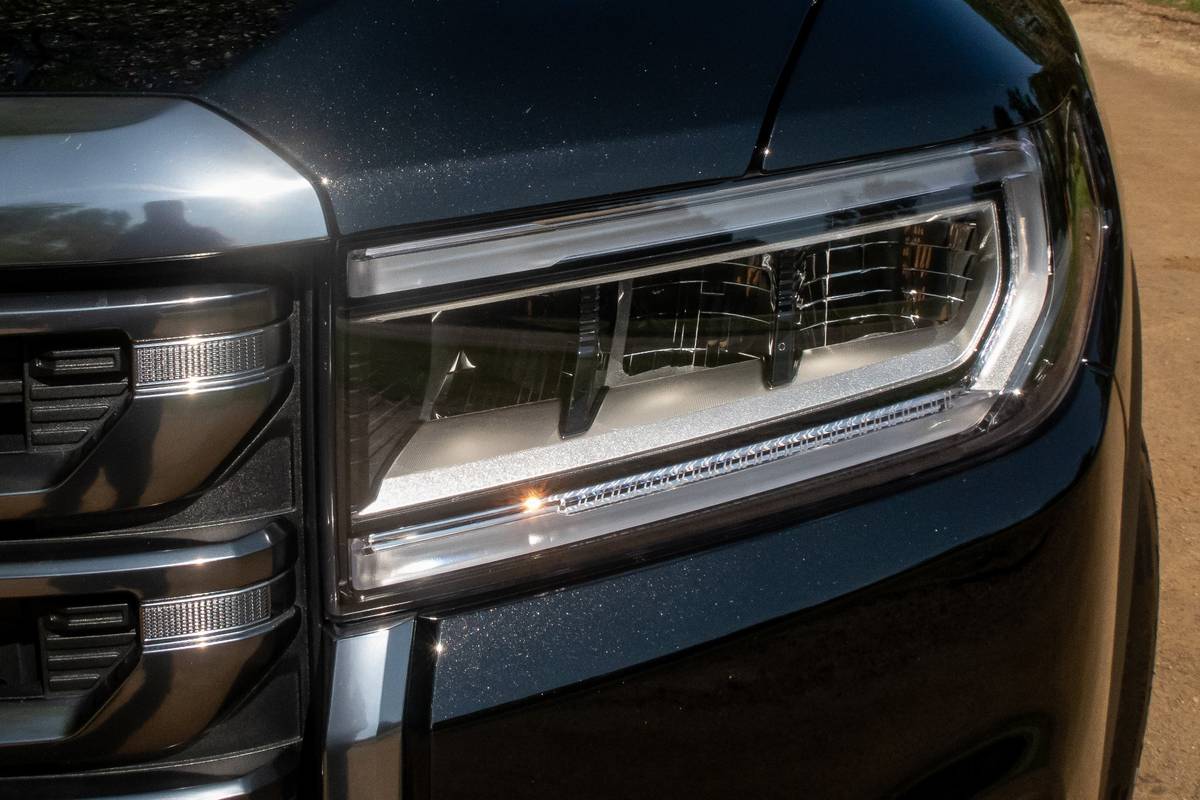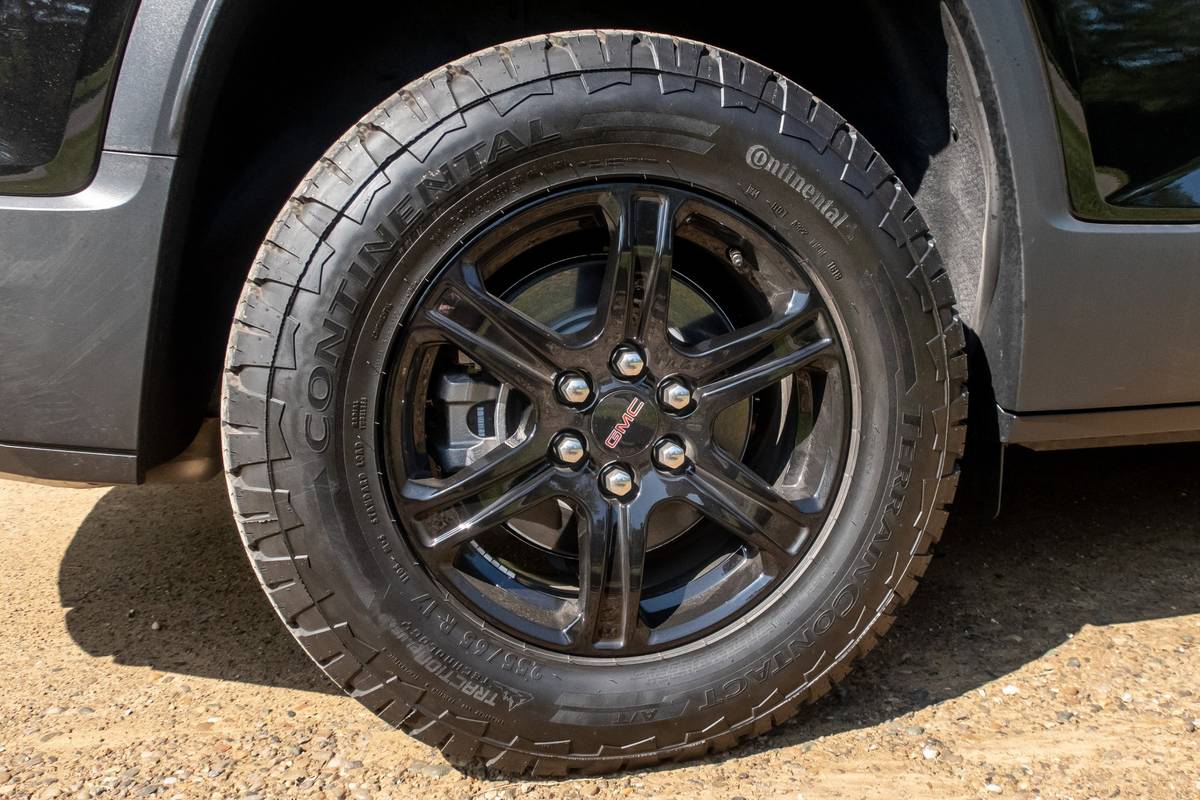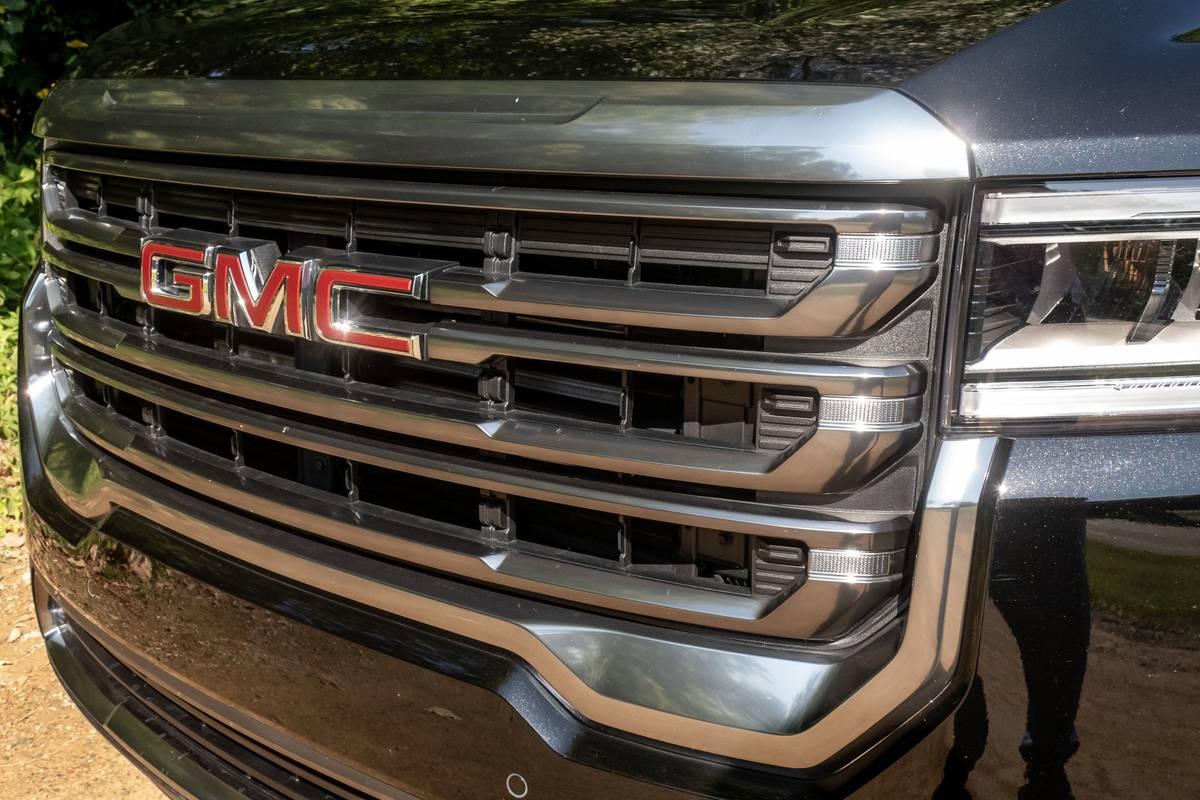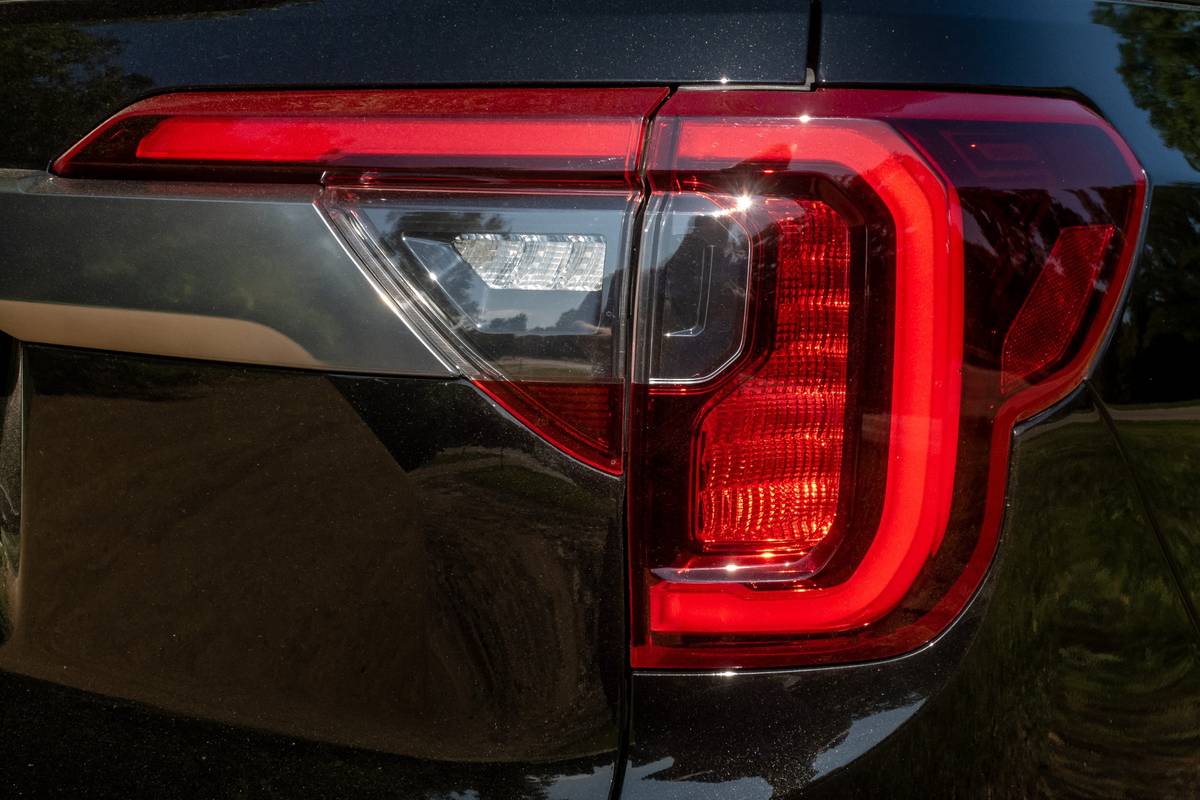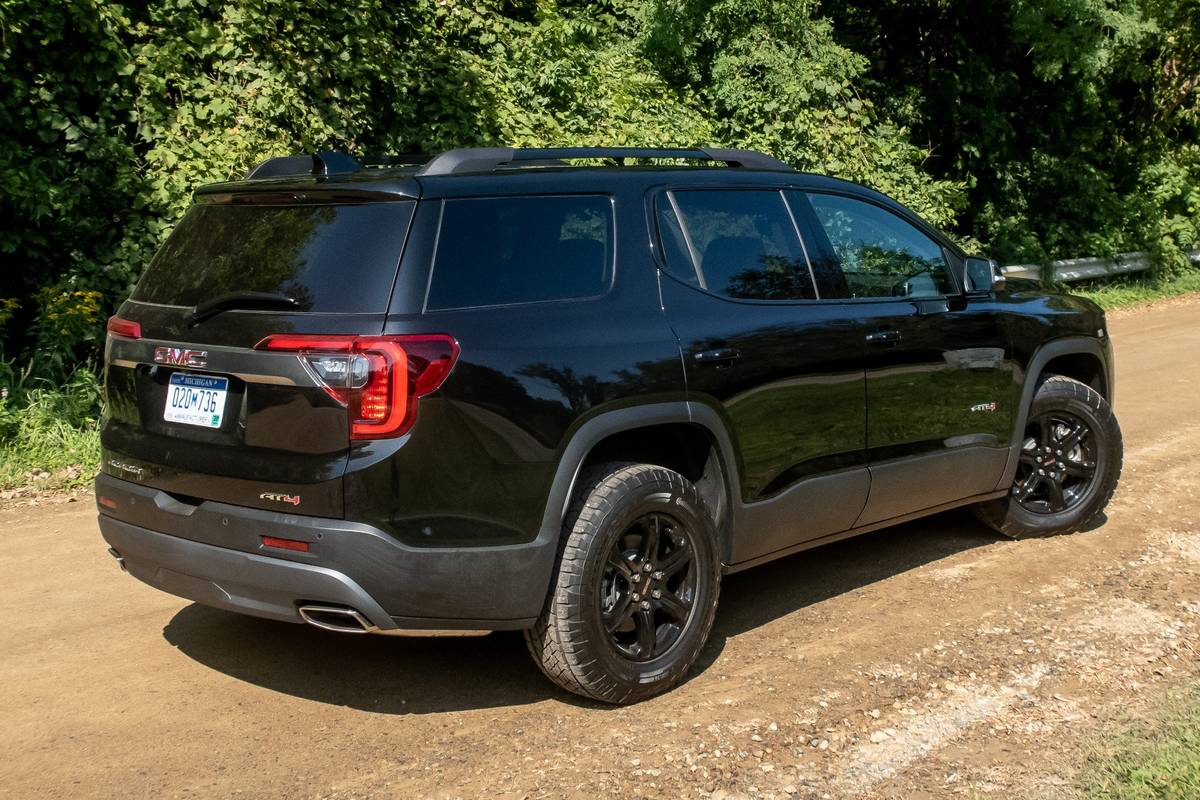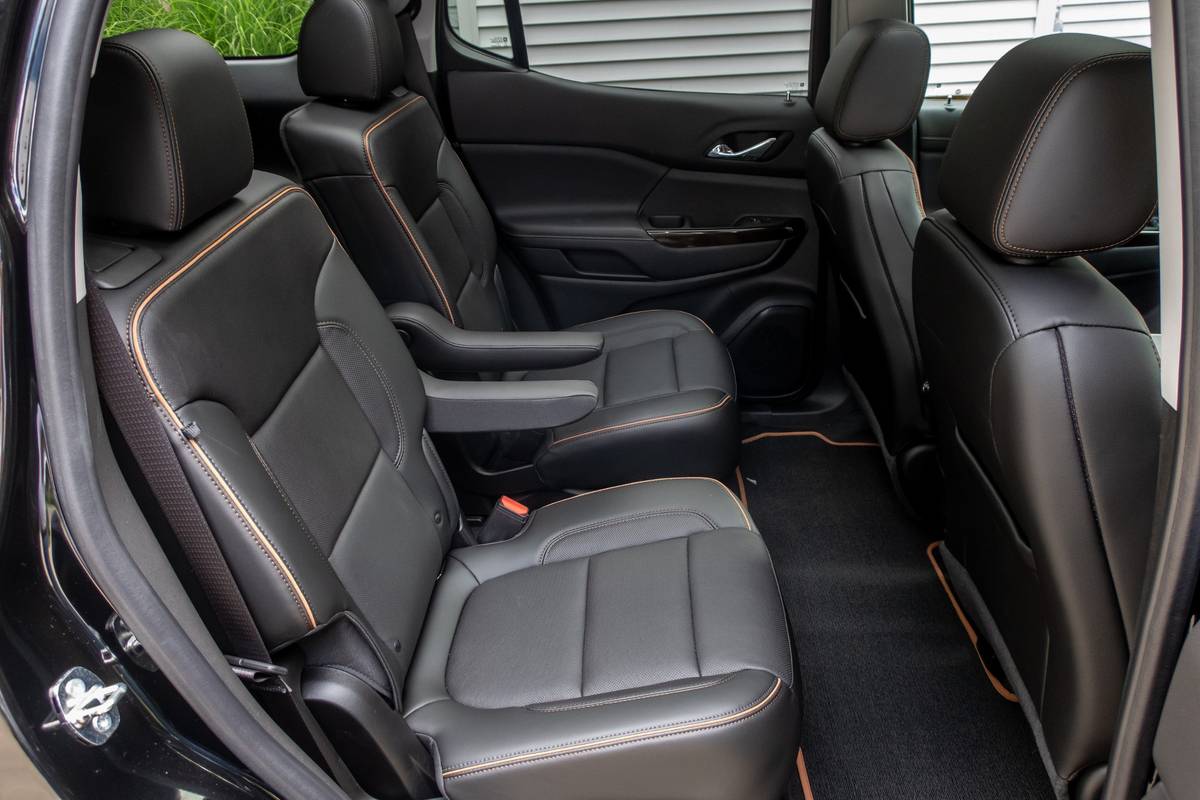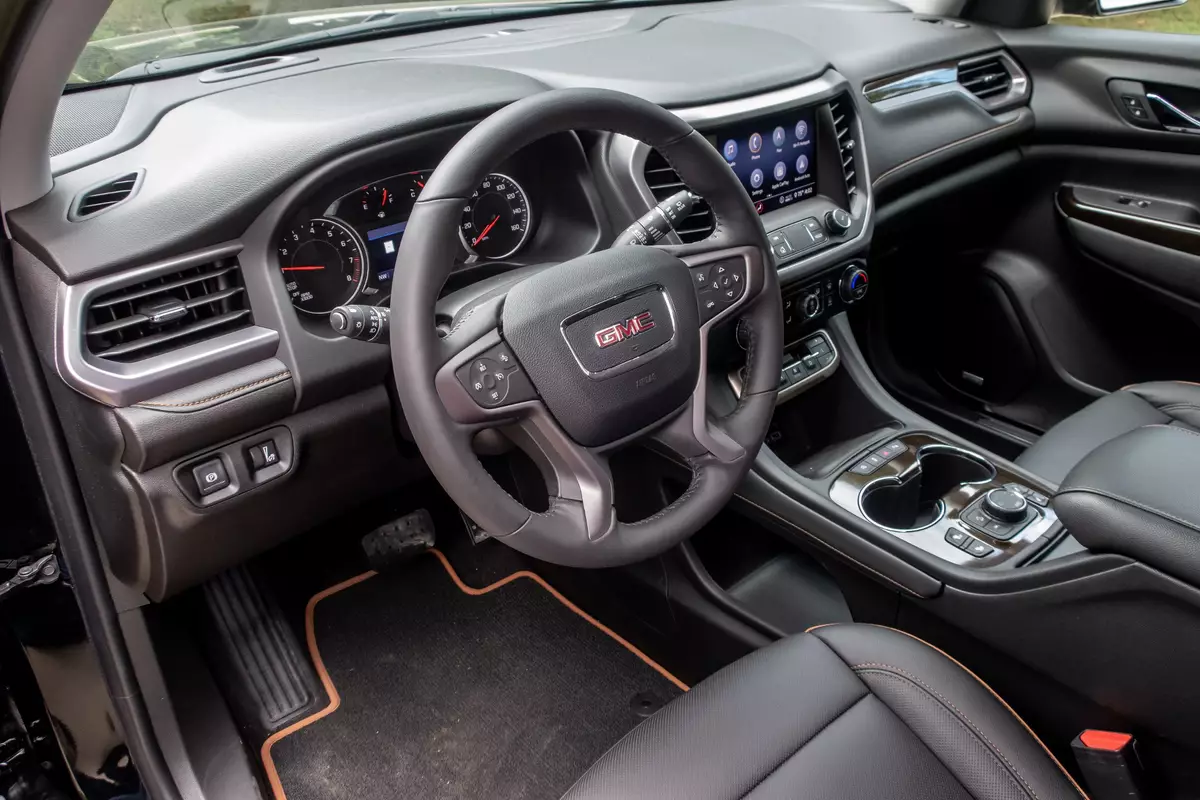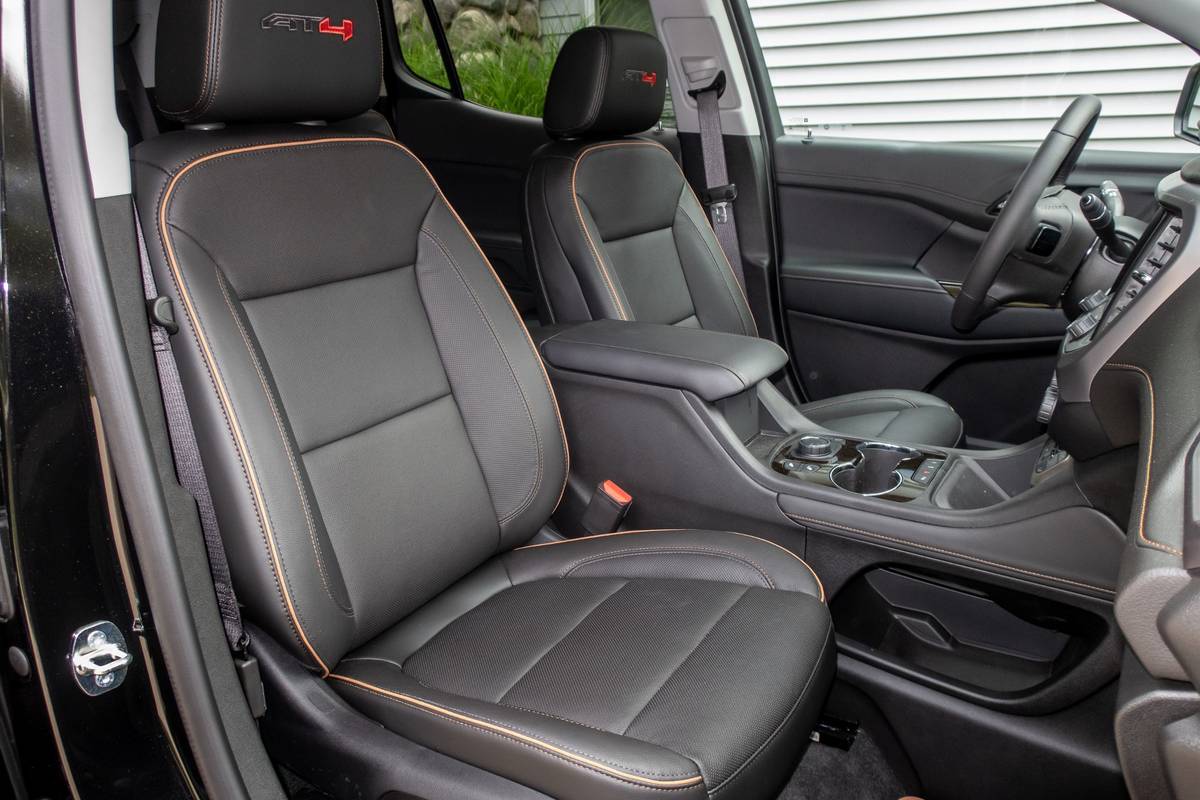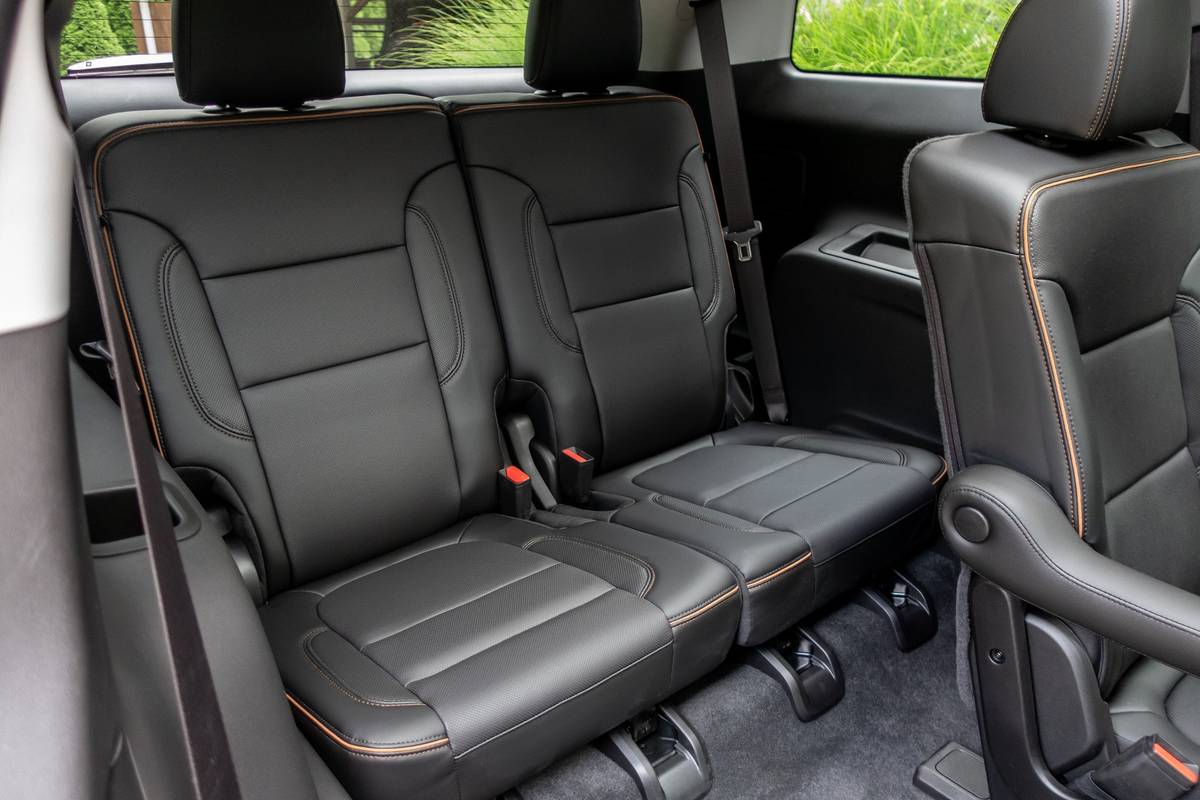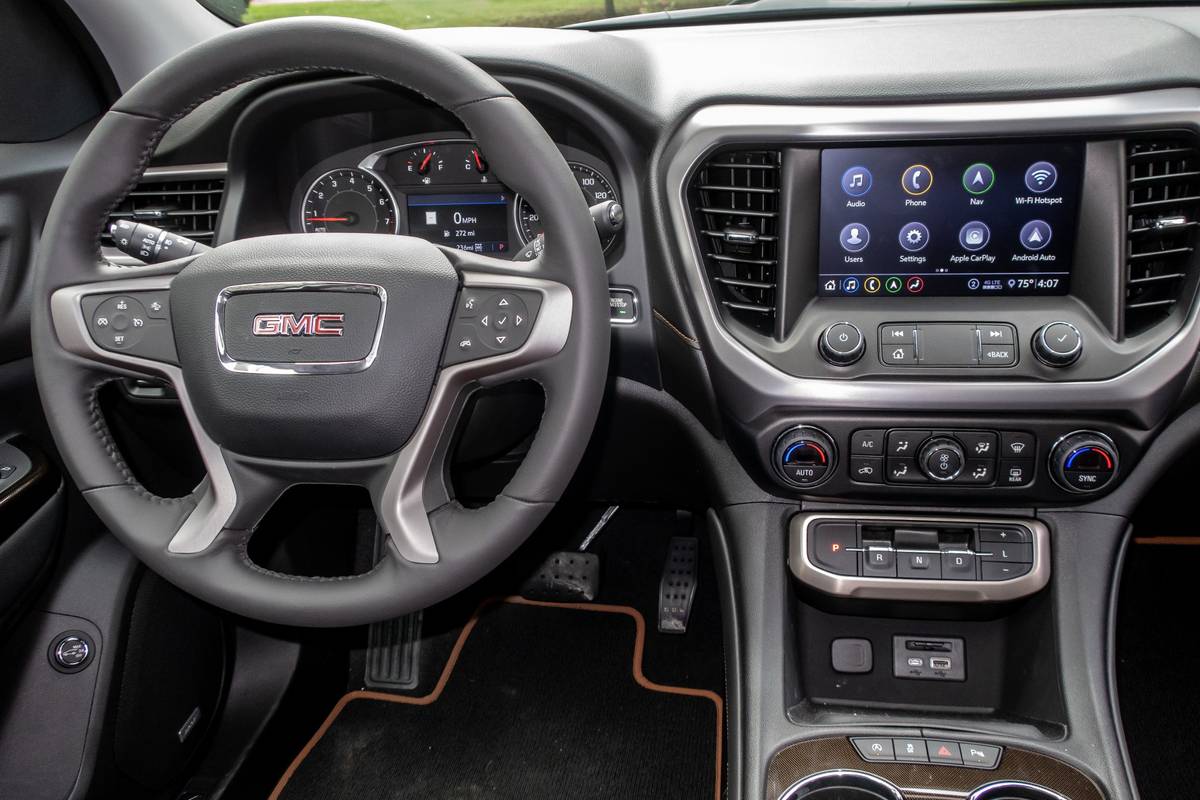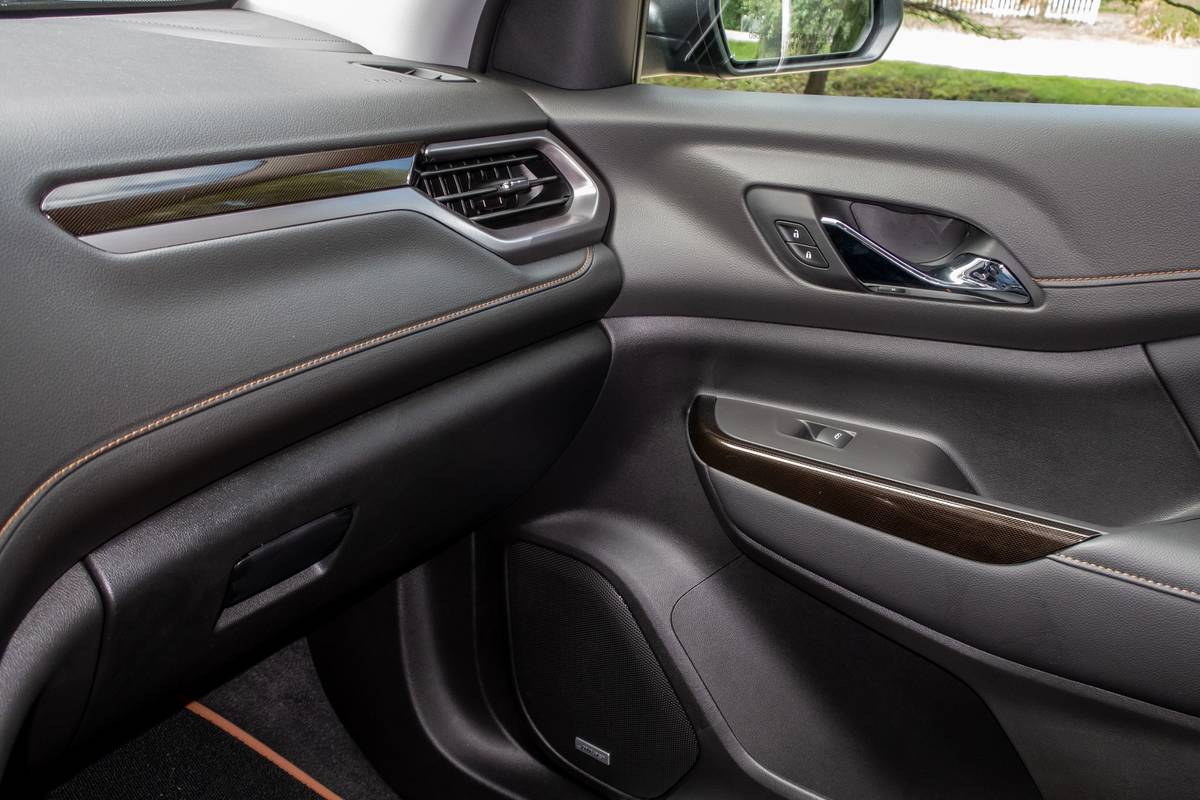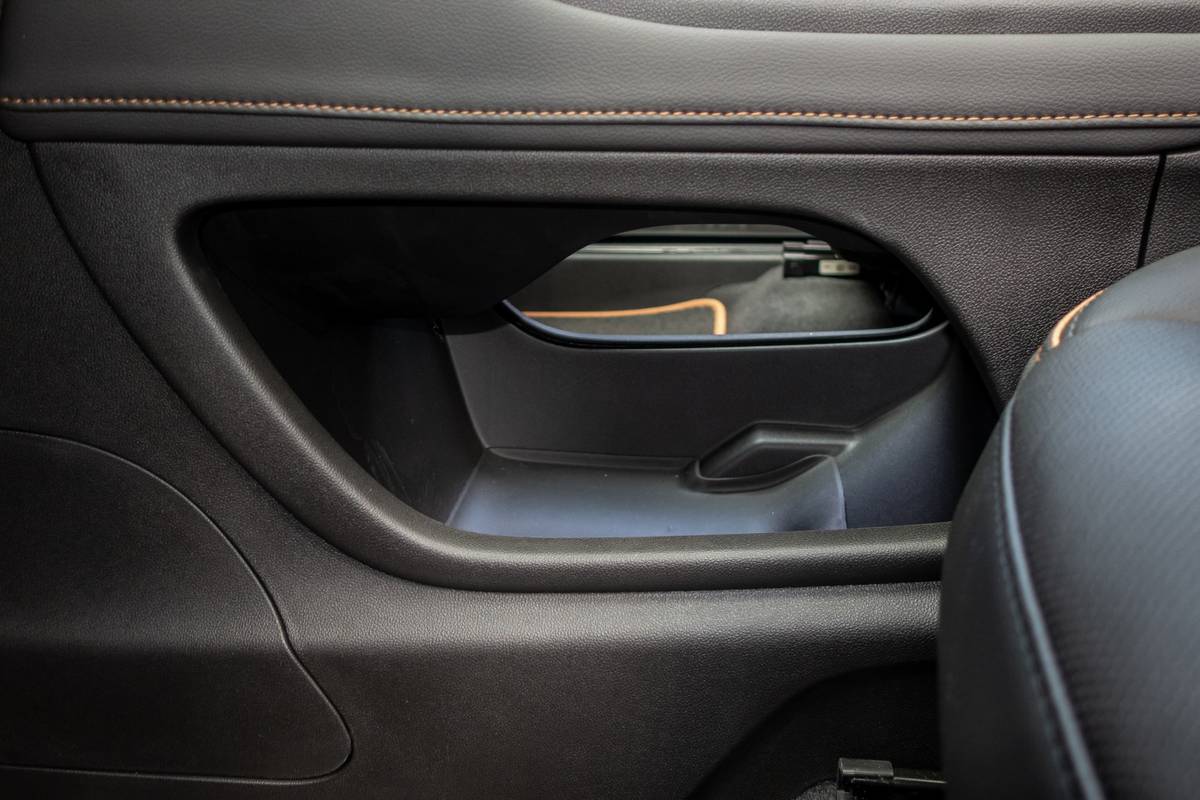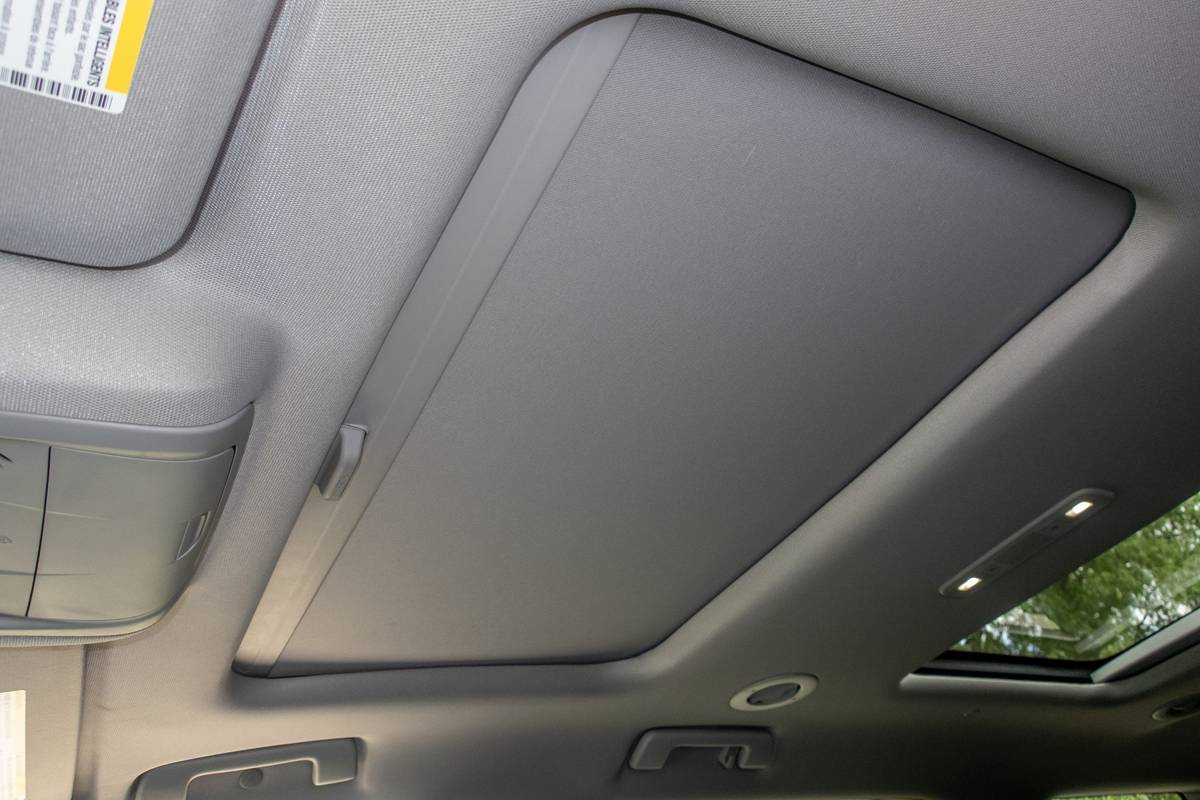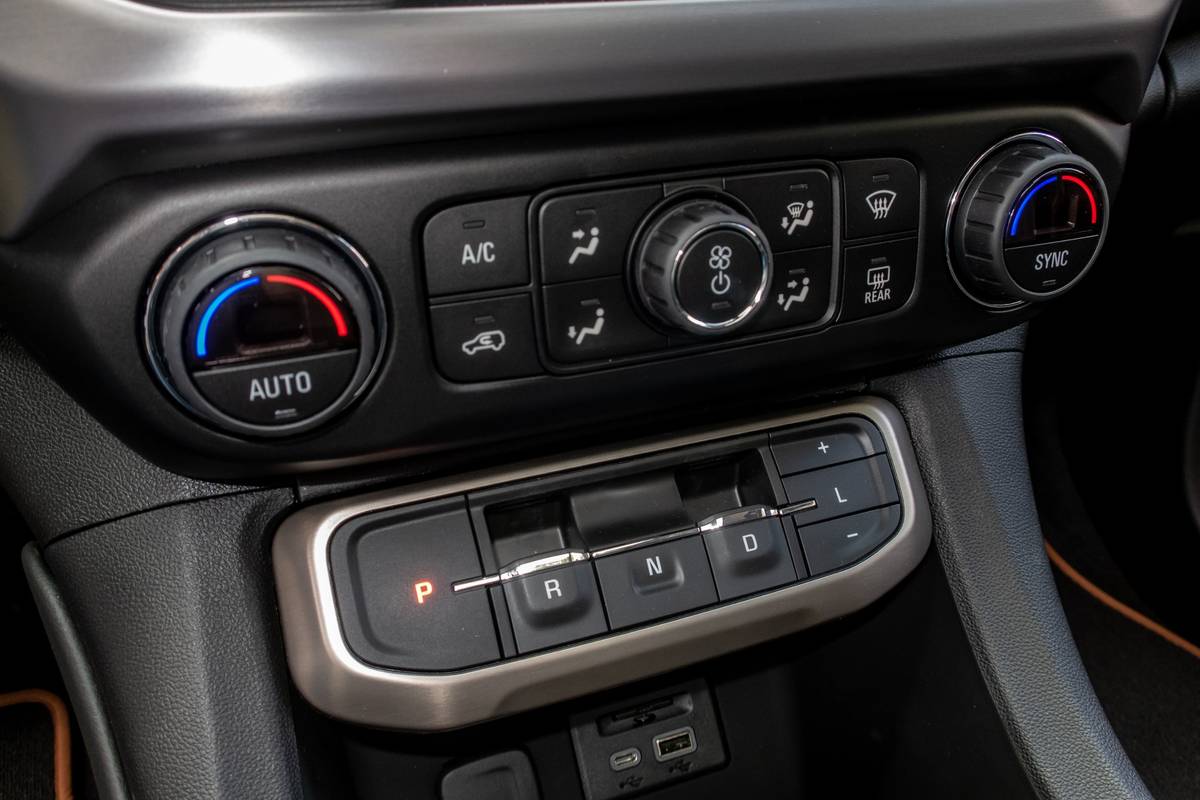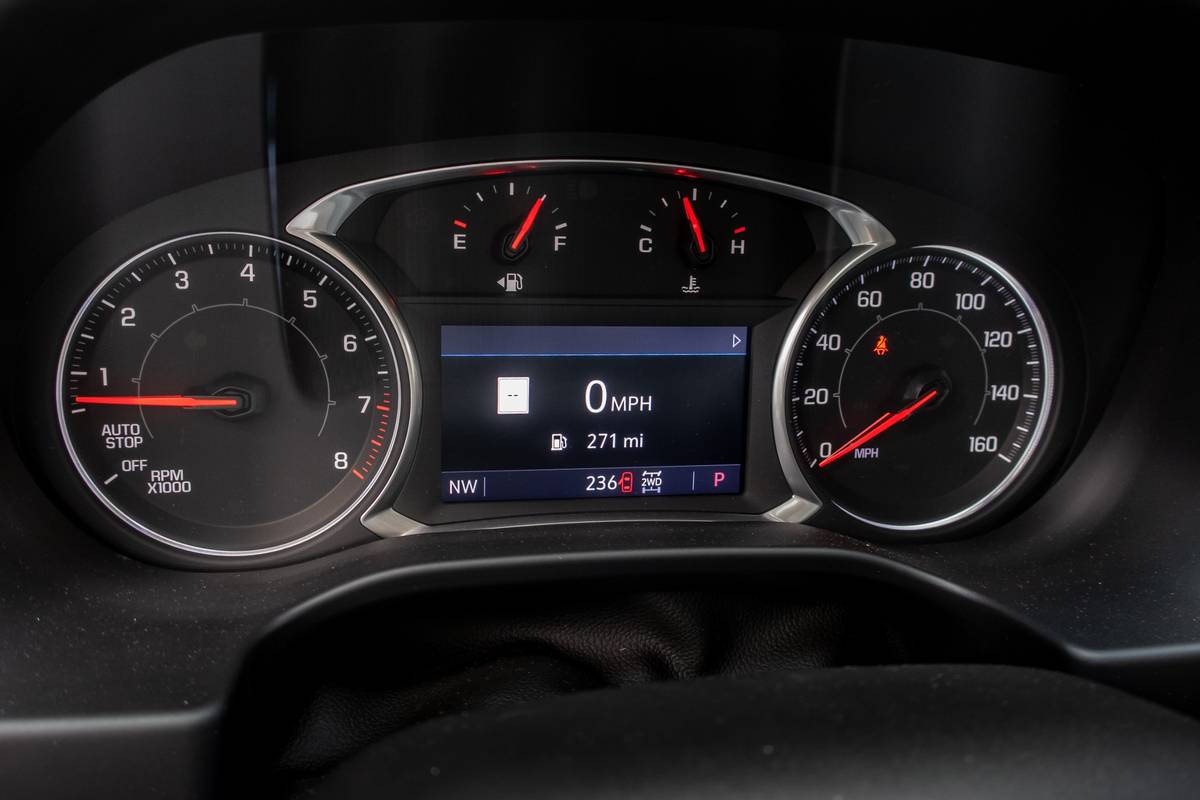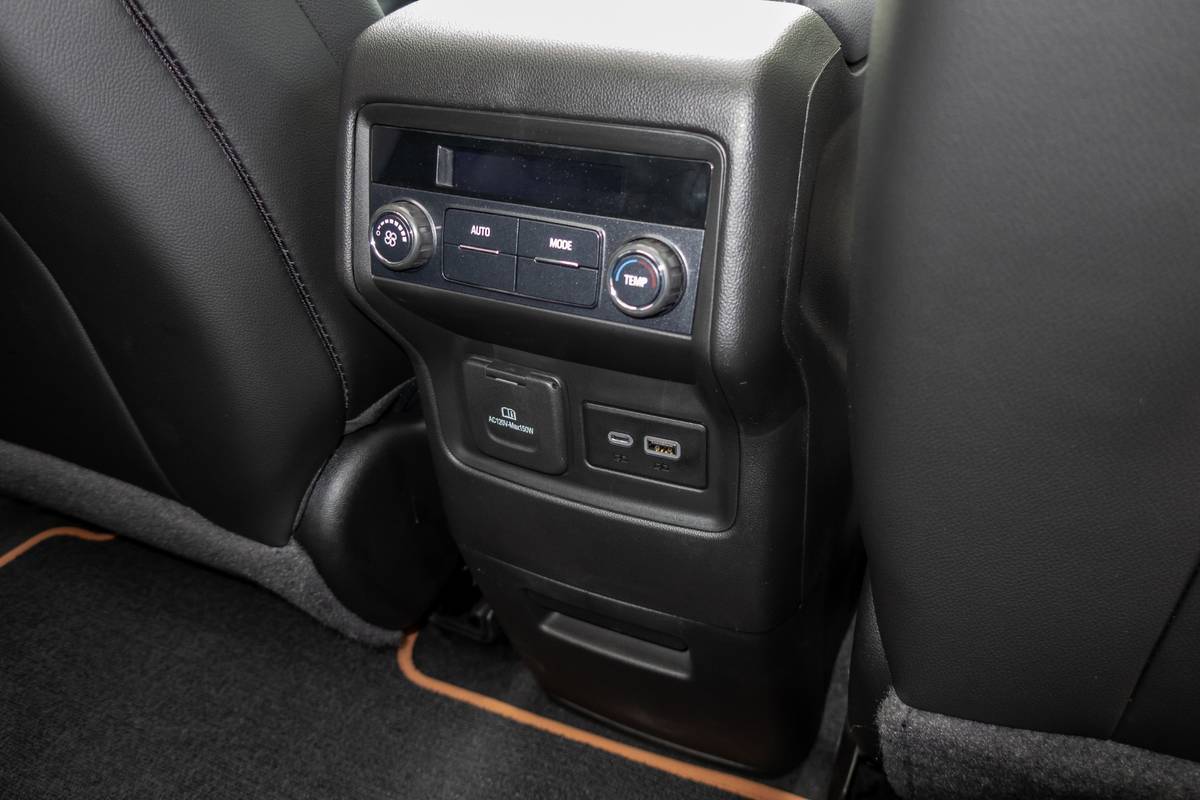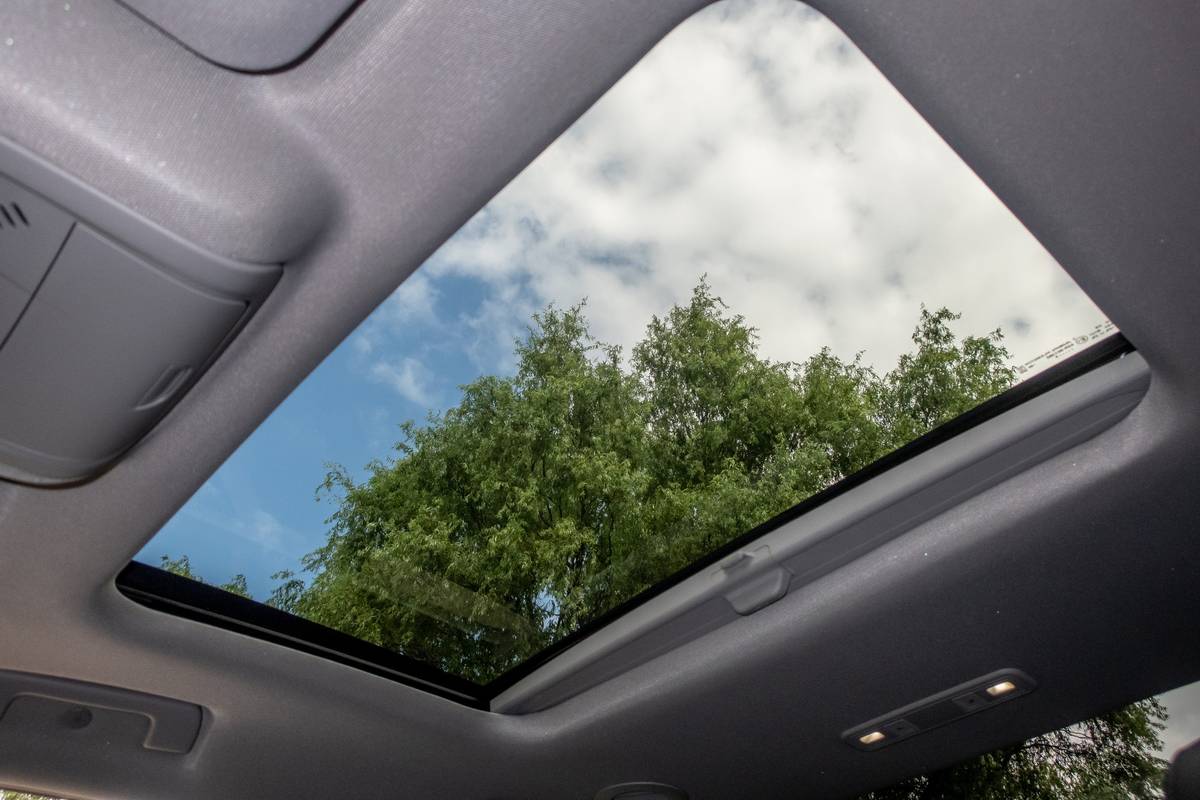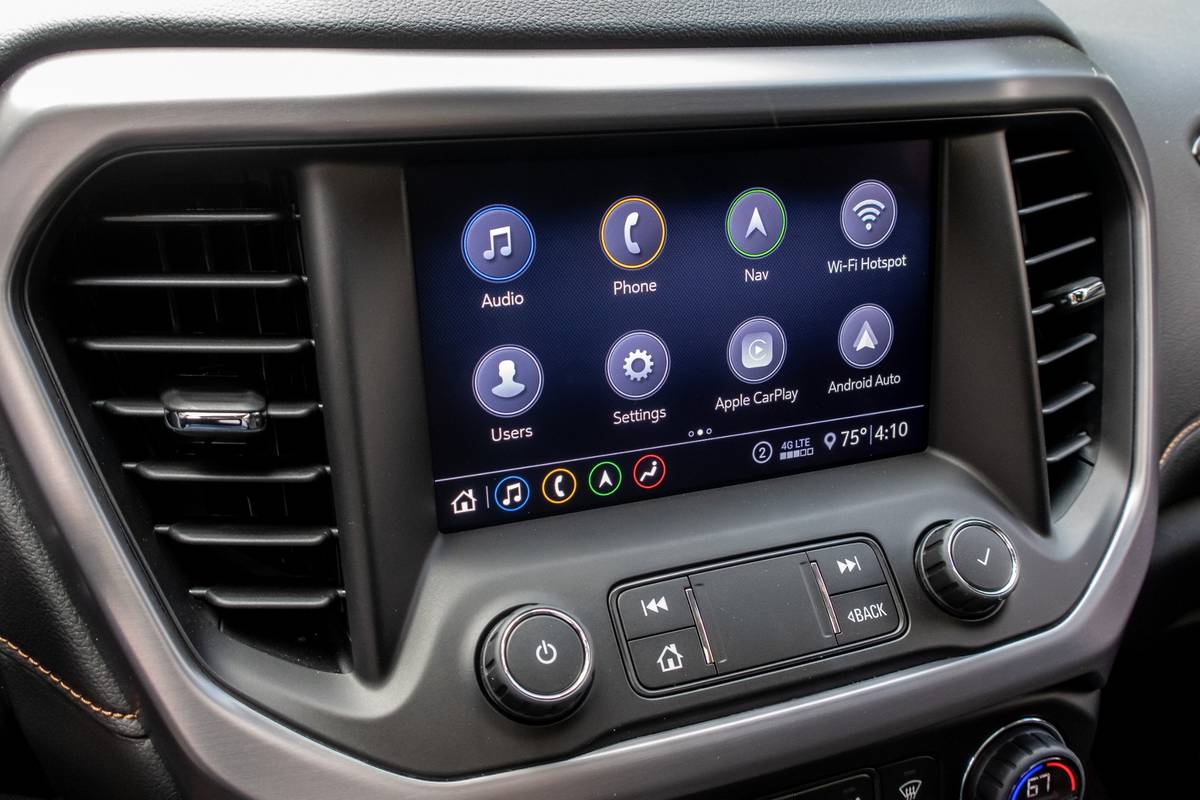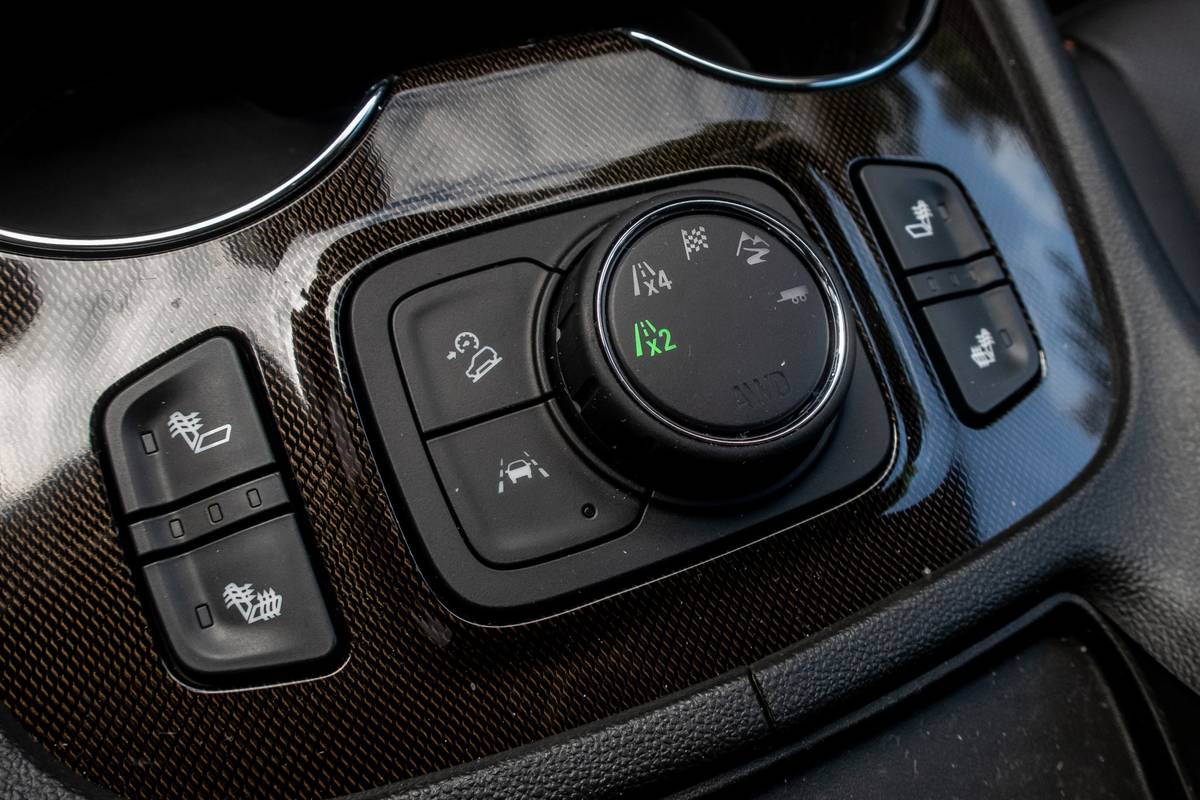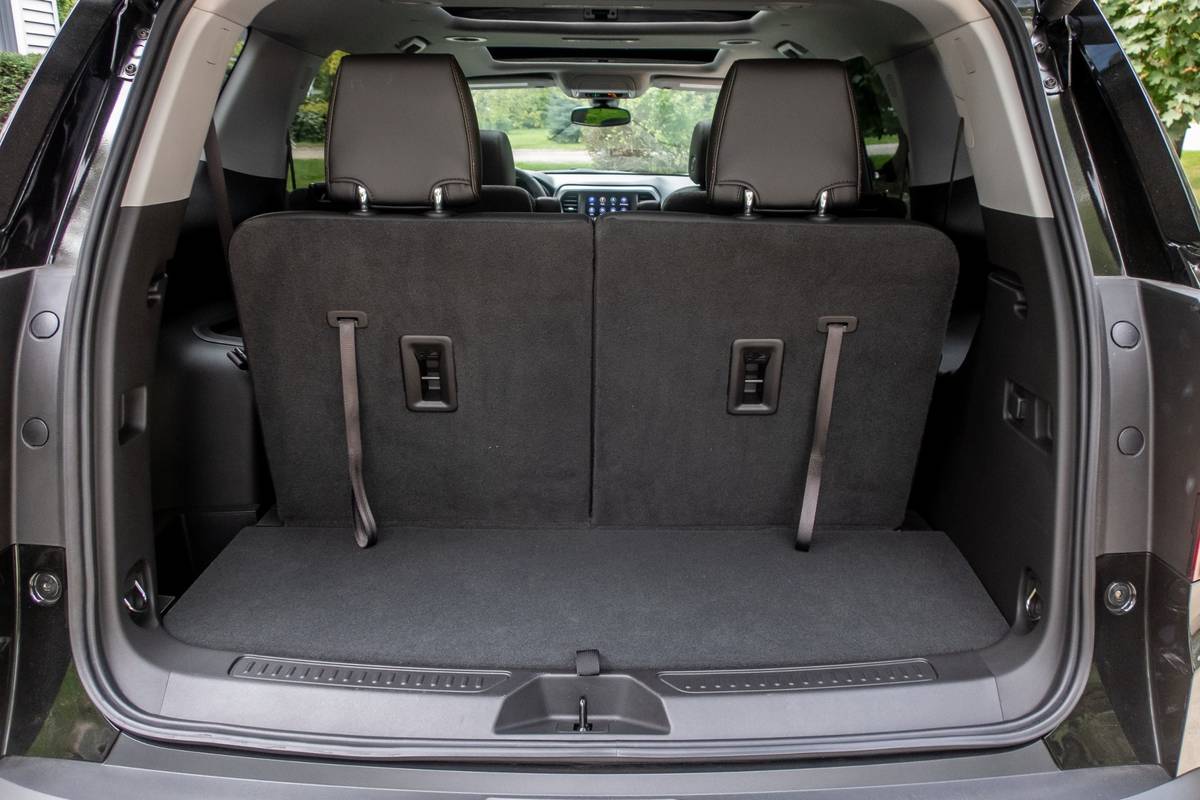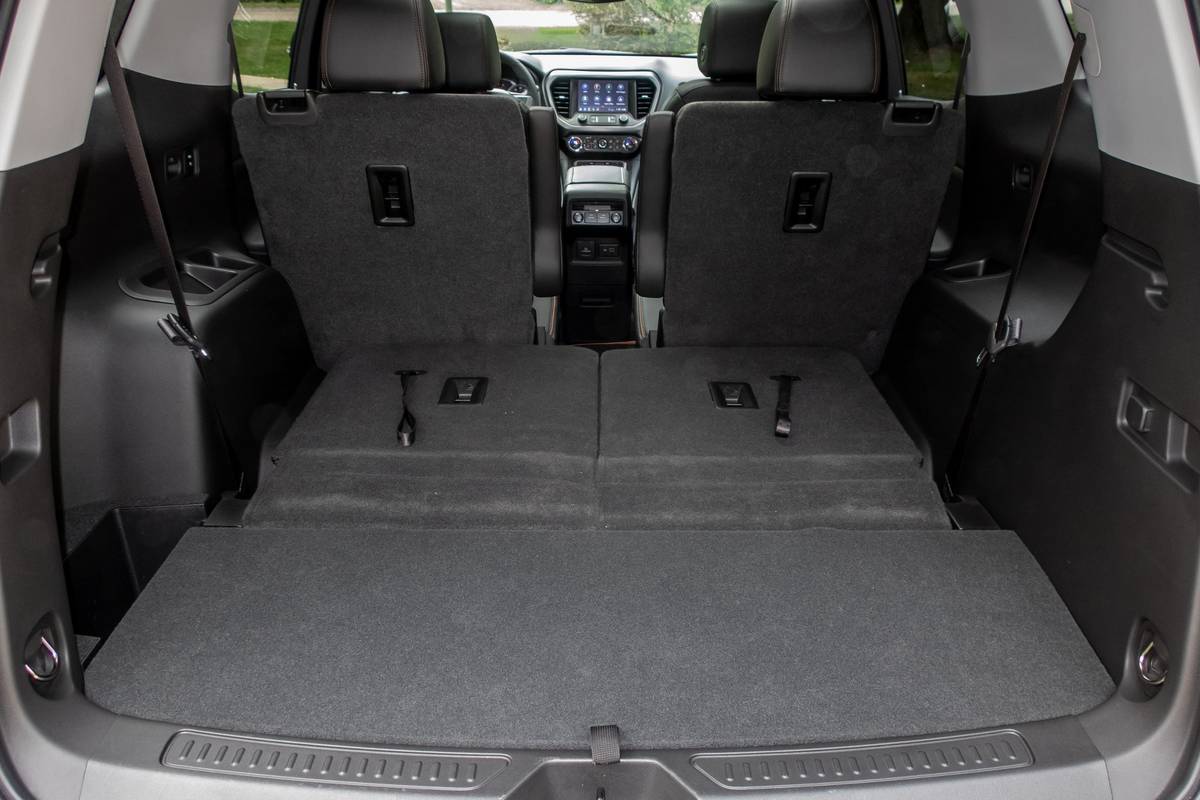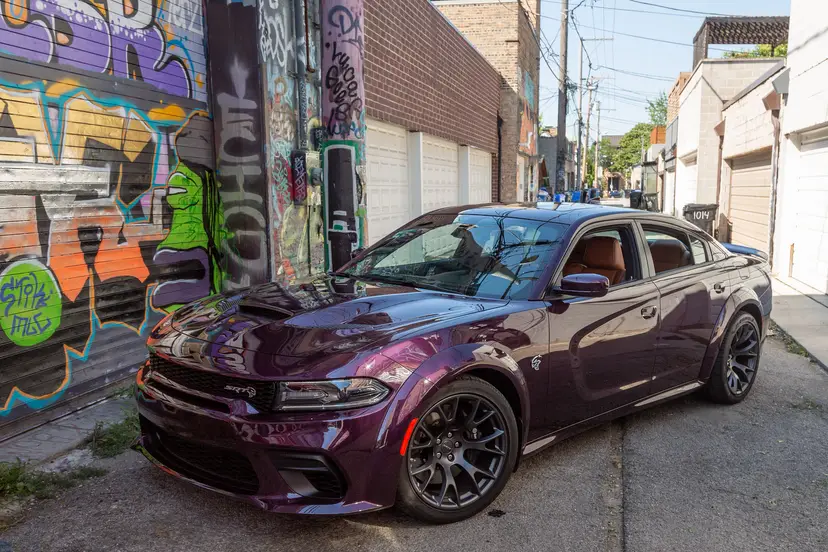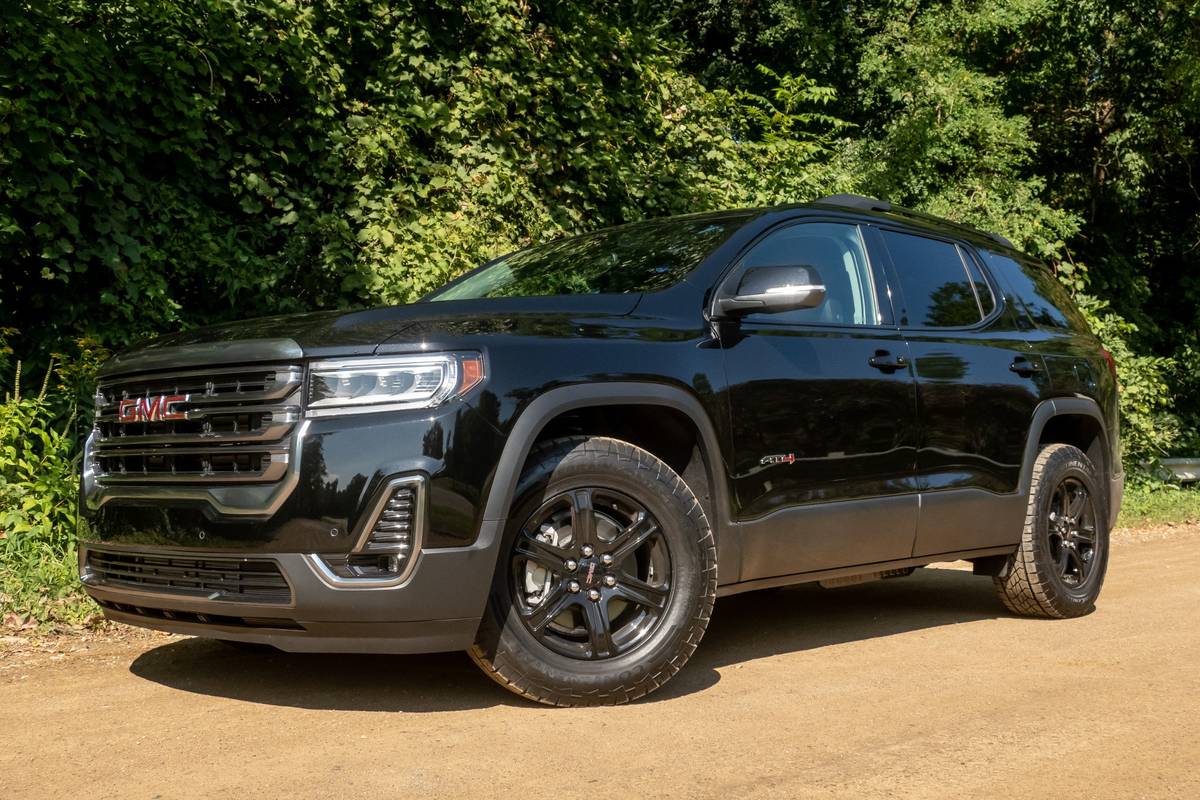
The verdict: The redesigned Acadia is thoroughly unremarkable, from its styling to its manners, and not even a weak attempt at an off-road trim level has changed that.
Versus the competition: If you’re looking for a real off-road-capable mid-size SUV, look elsewhere, such as a Toyota 4Runner or Jeep Grand Cherokee; the AT4 upgrades to the Acadia are mostly cosmetic, not functional.
The GMC Acadia receives a refresh for 2020, with new front and rear styling, a lightly revised interior and a new optional engine (in certain trim levels). But the biggest news is the arrival of a new trim level, one that GMC uses on its other trucks to denote a special off-road version: AT4.
AT4 has become a “sub-brand” for GMC; much like the Denali name denotes its luxury trucks, AT4 is meant to indicate GMC’s truckiest trucks. On the Sierra 1500, 2500 and 3500 pickups, the designation brings with it a bunch of off-road goodies — like skid plates, special suspension pieces, chunky all-terrain tires on special wheels, and a blacked-out look for its chrome bits and interior pieces. When GMC announced the car-based Acadia crossover was going to get the same treatment, we were excited. Maybe GMC would deliver a legit off-roader to compete with the Jeep Grand Cherokee Trailhawk and Toyota 4Runner TRD Pro. Alas, no.
The Acadia AT4 gets no more capability than a standard all-wheel-drive Acadia aside from chunkier all-terrain tires, a dual-clutch all-wheel-drive system (shared with the Chevrolet Blazer’s top trim levels) and Hill Descent Control. Beyond that, it’s a bog-standard V-6 Acadia. So is it any good?
Looks the Part
The Acadia’s styling changes are positive ones. The new model looks chunkier, more imposing and more dramatic than the outgoing model. It fits in better with the rest of GMC’s freshened lineup thanks to the larger, more rectangular family grille. The AT4 treatment does bring some bling to the Acadia – or, more accurately, it takes some bling away and replaces it with blacked-out trim. The grille and trim get blacked-out chrome, while unique wheels in either 17-inch or optional 20-inch sizes are shod with Continental all-terrain tires. My test vehicle came with the standard 17-inch tires, which are ostensibly better for off-roading thanks to their taller sidewalls’ ability to soak up bumps. Frankly, they also look better than the big 20-inch machined wheels; the smaller wheels’ blacked-out look just works better with the black plastic lower body cladding and blacked-out trim on my test vehicle, giving it a truly murdered-out look.
But Doesn’t Deliver
Sadly, the AT4 changes are mostly skin-deep. The only engine available is a 3.6-liter V-6 making 310 horsepower and 271 pounds-feet of torque, which is the premium engine in the Acadia (it’s also standard on the Denali). The standard powertrain on a base Acadia SL (the rental counter special) and SLE is a 193-hp, 2.5-liter four-cylinder, while SLT trims come with a 230-hp, turbocharged 2.0-liter four-cylinder engine. Both the SLE and SLT can have the V-6, as well. All engines are mated to a nine-speed automatic transmission, and front-wheel drive is standard on all trims except the AT4.
We’re used to the AT4’s 3.6-liter engine; General Motors uses it in so many of its models we just expect it whenever the 2.0-liter turbo isn’t present. It’s adequate to power the Acadia, but only just. The nine-speed transmission’s behavior is geared more toward preserving fuel economy than providing entertaining acceleration, with slow, lazy shifts that happen early in the rev range. Fuel economy results prove it out: The Acadia V-6 with all-wheel drive is rated 18/25/21 mpg city/highway/combined, and my week with the vehicle returned an overall average of 22 mpg. That puts it near the bottom of the pack in our latest roundup of three-row mid-size SUVs, above the bigger, V-6-powered Volkswagen Atlas but below the smaller turbocharged four-cylinder Subaru Ascent.
The Acadia will move if you really put your foot down, but it’ll be accompanied by surprising amounts of torque steer in two-wheel-drive mode. All-wheel drive can be deactivated using a rotary Drive Mode Selector knob, supposedly to improve fuel economy by not employing unnecessary drivetrain bits when the roads are dry and clear. The same knob can also engage various drive modes, including a Sport mode, but none of them noticeably change the way the Acadia behaves on the road.
The Acadia AT4’s other driving attributes are a mixed bag. The ride is smooth and compliant, thanks in no small part to my test vehicle’s 17-inch wheels and tall-sidewall tires. Surprisingly, they didn’t diminish the crossover’s steering or handling; steering response is admirably direct, and the feel is decent, as well. The brakes are uninspiring, with considerable softness on initial application. Stay on them hard, however, and they will bring the Acadia down from highway speeds with minimal effort. The Acadia has none of the firm, entertaining sportiness of a new Ford Explorer, and none of the upscale chassis refinement of a Kia Telluride. You won’t mistake this for anything other than the crossover equivalent of the average family sedan. It’s a thoroughly ordinary driving experience — one meant not to offend or exhilarate, just to be stable, confident and reliable for family transport.
What it’s not is more off-road capable in any meaningful way than other Acadias, and it falls well short of the abilities of off-road-oriented SUVs like the Jeep Grand Cherokee Trailhawk, Toyota 4Runner or even a Subaru Outback. There’s no additional ride height, no special shock absorbers or springs, no additional underbody protection, no tow hooks — nothing you get in the AT4 package on GMC’s pickups and upcoming full-size SUVs, aside from some chunkier standard tires. The Acadia AT4 does get GM’s dual-clutch AWD system, which also appears on the Chevrolet Blazer, but its benefit in off-road situations is unclear. (The Blazer is solely street-focused.) Hill Descent Control, for whatever it’s worth, is also exclusive to this trim level, accompanying the Drive Mode Selector that includes an Off-Road mode in all-wheel-drive Acadias. GMC opted to make the AT4 little more than an appearance package on this model, which is disappointing given how capable and noteworthy it is on other GMC offerings.
Interior Typical for GM These Days
There are a few updates to the interior, but they don’t go very far toward improving the overall quality feel of the 2020 Acadia’s cabin. The center console is new, and the shifter has been converted into the pushbutton style that first appeared on the GMC Terrain (an adaptation of which now appears on the redesigned full-size 2021 Yukon). There’s a revised multimedia system, as well, which works better than before (not that I had any real complaints about GM’s multimedia systems, which are better than average). It’s displayed on a standard 8-inch touchscreen.
Front- and second-row seats are comfortable, spacious and multi-adjustable. The second-row captain’s chairs slide forward and backward, allowing passengers to adjust legroom among themselves. The third row is not comfortable and is suitable only for children. Getting into and out of it is a challenge, and there isn’t a lot of width or headroom once you’re there. This underscores the Acadia’s position in the middle of the “mid-size crossover” segment, comparable more to the Subaru Ascent and Honda Pilot than the bigger boys like the Kia Telluride, VW Atlas, Hyundai Palisade and Chevrolet Traverse — of which the Acadia was a twin until GMC downsized it for the 2017 model year.
The issue with the Acadia’s interior is that it falls short of competitors in terms of design, equipment and materials quality. At this price — nearly $47,000 as-tested — there are no memory seats and the multimedia screen is too small (8 inches isn’t what it used to be). The moonroof shade is a thin, cheap fabric that flaps around alarmingly in its track when the windows are open and the shade is closed. There’s hard plastic on the touch points around your knees, a general lack of warmth throughout the interior and a whole lot of charcoal gray plastic that looks and feels cheap. The price tag feels wholly inappropriate when you compare this vehicle with a new Kia Telluride or Hyundai Palisade — the new benchmarks in this class — but it also falls short of the equipment specs for a VW Atlas.
Room Enough for Stuff
Keep the third row stowed, and the Acadia AT4 has enough room to swallow a good amount of stuff. There’s only 12.8 cubic feet of room behind the third row, but 41.7 cubic feet when it’s folded and 79.0 cubic feet with both the second and third rows folded, Chevrolet says. We unfortunately weren’t able to do a full workup on the Acadia ourselves, but our own measurements of other vehicle cargo areas have shown a great discrepancy between how various automakers report their numbers, so a meaningful comparison to other competitors is difficult. The biggest three-row SUV cargo area we’ve measured ourselves was the 2020 Chevrolet Traverse, where we measured 15.2 cubic feet behind the third row and just 28.6 cubic feet behind the second row (with the third row folded). Given the Traverse has an unquestionably larger cargo area than the Acadia, that doesn’t jibe with the 41.7 cubic feet GMC reports for the Acadia’s cargo area, so you see how screwy cargo volume reporting can be. Suffice to say there’s plenty of room with the third row folded, and with the second row folded the Acadia is spacious enough for most families.
Safety, for a Price
The Acadia received a big redesign back in 2017, and the new model has gotten top marks for crash safety from the Insurance Institute for Highway Safety. The National Highway Traffic Safety Administration hasn’t yet posted the 2020’s rating, but it gave the 2019 version five stars overall, and there haven’t been any structural changes that would affect its 2020 score.
The newest Acadia can be had with a full complement of electronic safety equipment, but many of the more advanced features that are beginning to come standard on competing models remain optional on high trim levels of GM vehicles. The AT4 comes standard with rear park assist sensors with cross-traffic alert, lane change alert with blind spot warning, and an HD backup camera. But features like automatic high beams, front parking sensors, forward collision alert, lane keep assist, lane departure warning and automatic emergency braking are in an option package. Many of these items are standard on competitors from Hyundai, Kia, Subaru and Ford.
That Price is Tough to Swallow
The 2020 Acadia starts at a low $30,995 including destination for a front-wheel-drive SL with the standard 2.5-liter engine, but good luck finding one of those. Far more numerous will be mid-level trims like the SLE and SLT. The AT4 starts at $43,395 and includes the V-6 engine and standard all-wheel drive.
Cars.com’s Editorial department is your source for automotive news and reviews. In line with Cars.com’s long-standing ethics policy, editors and reviewers don’t accept gifts or free trips from automakers. The Editorial department is independent of Cars.com’s advertising, sales and sponsored content departments.

































